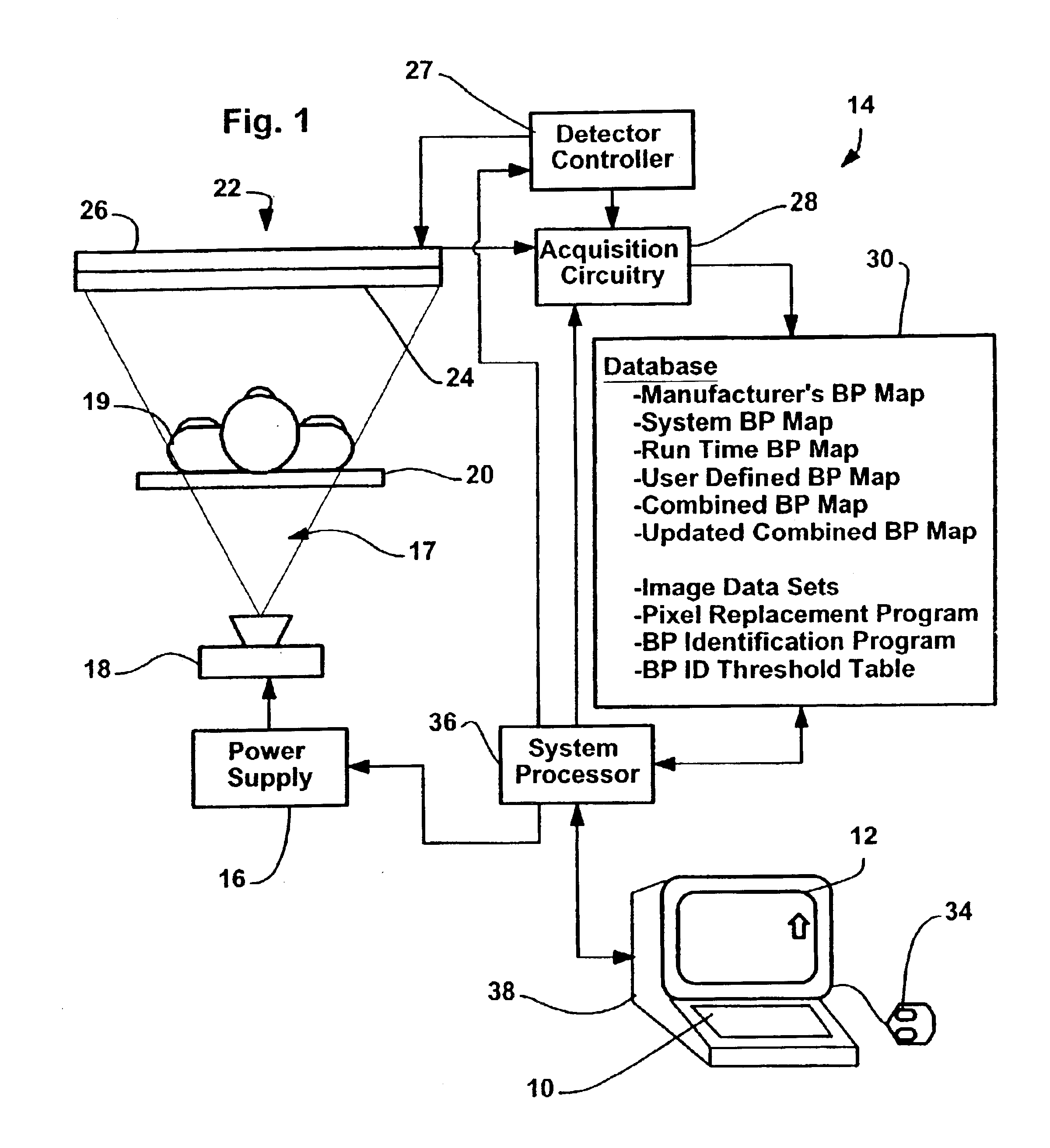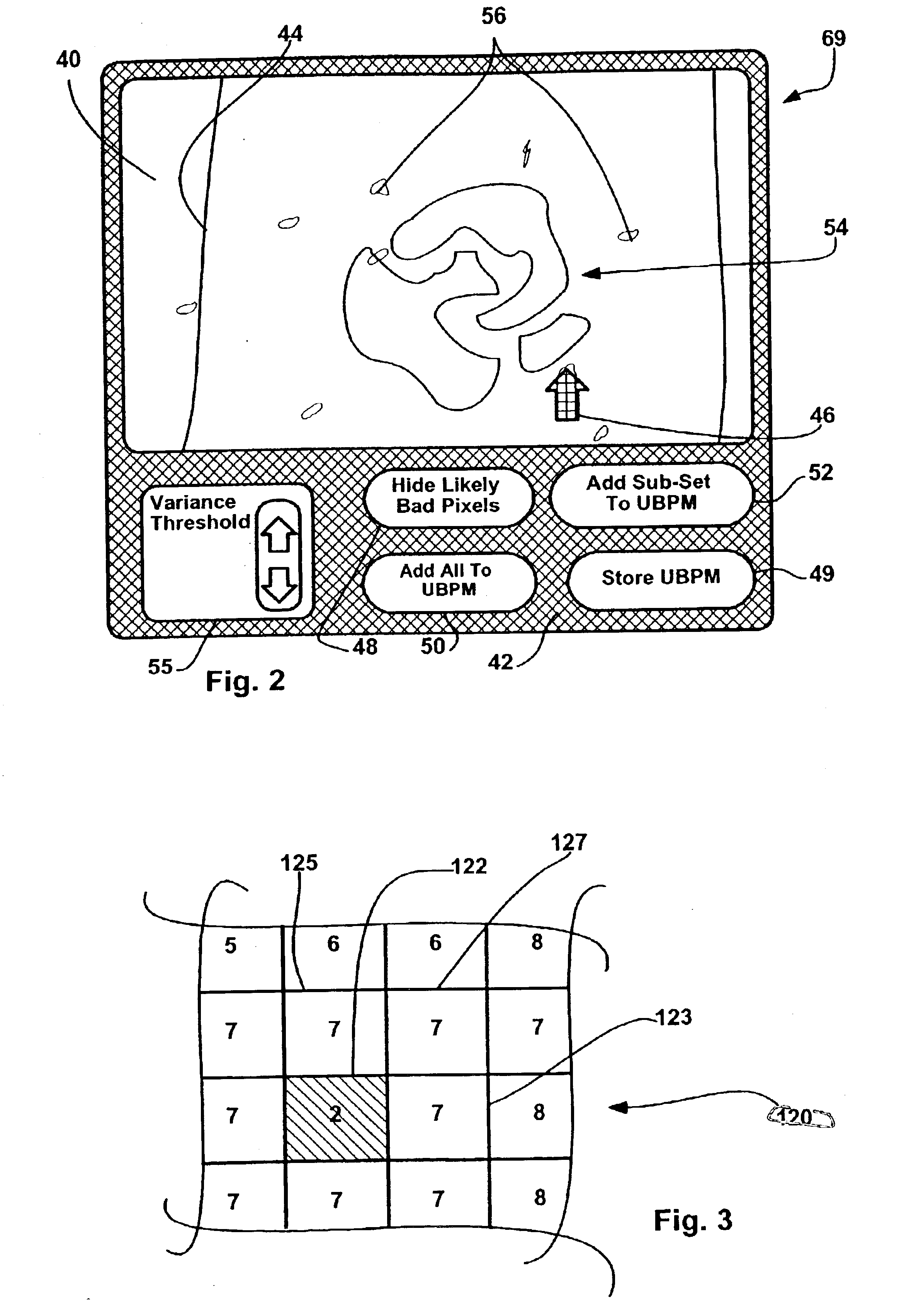Method and apparatus for identifying composite defective pixel map
a composite and defective technology, applied in the field of xray detectors, can solve the problems of reducing diagnostic usefulness, affecting the diagnostic affecting the detection accuracy of the detector, so as to achieve the effect of improving diagnostic usefulness, and reducing the detection accuracy
- Summary
- Abstract
- Description
- Claims
- Application Information
AI Technical Summary
Problems solved by technology
Method used
Image
Examples
Embodiment Construction
[0033]Referring now to the drawings, and more specifically, referring to FIG. 1, the present invention will be described in the context of exemplary X-ray imaging system 14 which includes an X-ray source 18, a large area solid state X-ray detector 22, a patient support table 20, a power supply 16, a detector controller 27, acquisition circuitry 28, a system processor 36, a database 30, and a user interface generally identified by numeral 38. As illustrated, when X-ray source 18 is excited by power supply 16, source 18 emits an X-ray beam 17. Source 18 and detector 22 are juxtaposed on opposite sides of an imaging area such that the X-ray beam 17 emanating from source 18 is directed toward a detecting surface of detector 22 and subtends the detecting surface.
[0034]Patient support table 20 is generally positioned within X-ray beam 17 such that, when a patient 19 is positioned for support on table 20 within the imaging area, the patient or, at least, a portion of the patient of interes...
PUM
 Login to View More
Login to View More Abstract
Description
Claims
Application Information
 Login to View More
Login to View More - R&D
- Intellectual Property
- Life Sciences
- Materials
- Tech Scout
- Unparalleled Data Quality
- Higher Quality Content
- 60% Fewer Hallucinations
Browse by: Latest US Patents, China's latest patents, Technical Efficacy Thesaurus, Application Domain, Technology Topic, Popular Technical Reports.
© 2025 PatSnap. All rights reserved.Legal|Privacy policy|Modern Slavery Act Transparency Statement|Sitemap|About US| Contact US: help@patsnap.com



